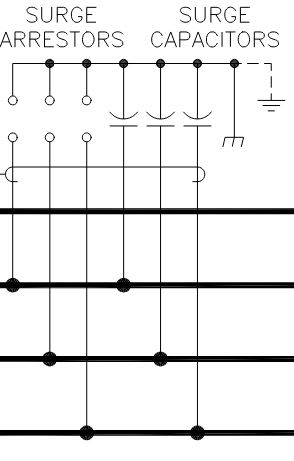@wcaseyharman
Let's look at the OP's original posted image. Neither the gear nor the load (motor) is shown, so let's assume the breaker/gear connection is just off-image to the left and the motor is off-image to the right. If the distance "across the image" is small, the likelihood of an event occurring between gear and load is pretty small. This would correspond to most generation facility layouts, where the "across image" distance might only be a few 10s of meters. However, for a large industrial facility (think petrochemical, pulp and paper, mining, or metal rolling) or a dispersed generating facility (onshore or offshore wind farm, tidal power, solar plant), the distance between the gear and the machine may be anywhere from 500-2500 m - or even more. How often do you think an event might happen in that kind of distance? Particularly with all the other associated equipment (overhead cable runs/trays, light poles, process flow routing, cooling towers, cranes, etc.) located in between?
The major reason for surge caps and/or arrestors is the ability to protect critical equipment from the likelihood of a (substantial) transient event, such as a lightning strike or - in some cases - a switching transient (like an auto-transfer between multiple feeder busses).
Converting energy to motion for more than half a century


